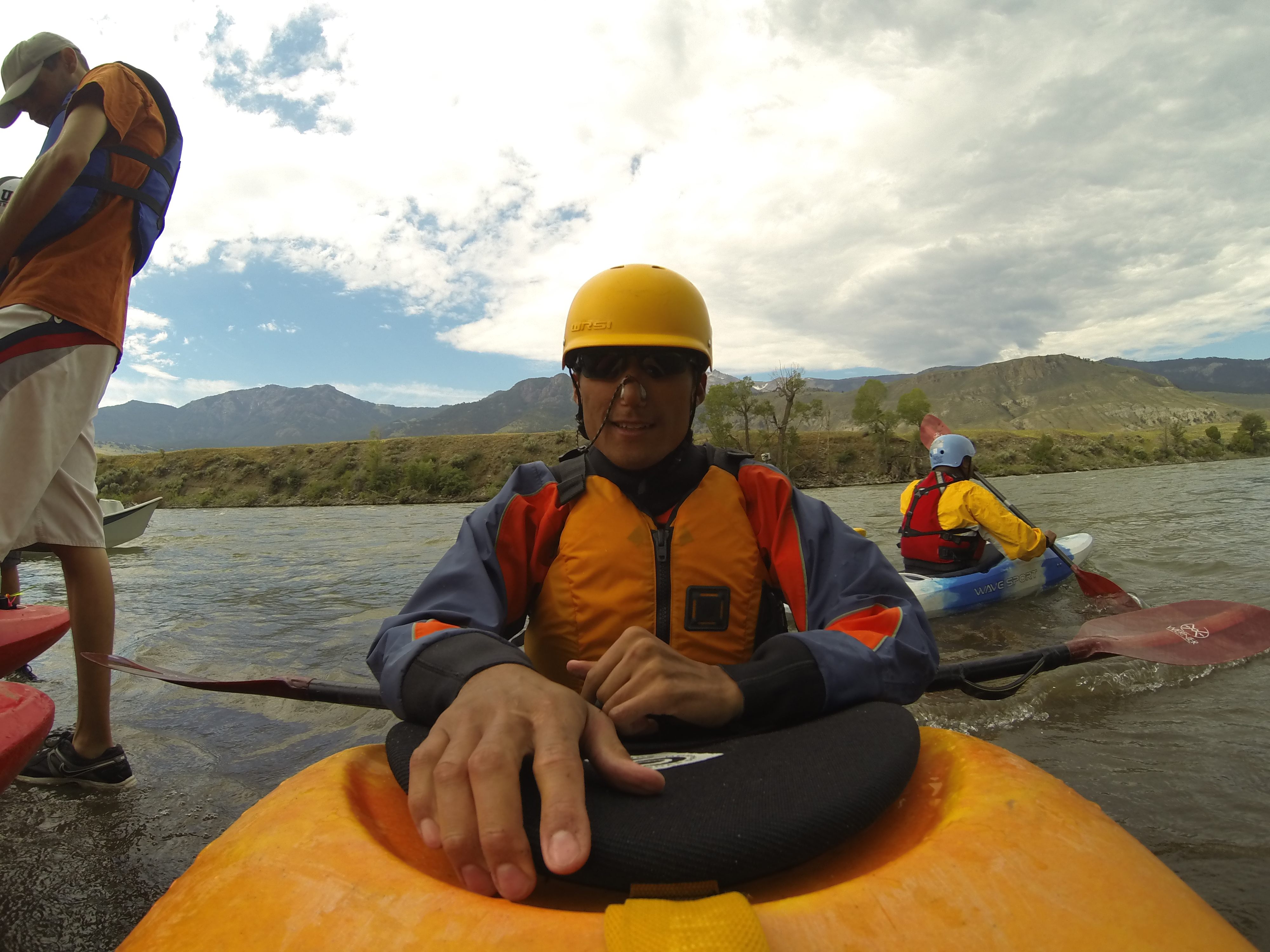Yankee Jim Canyon
In July of 2014, a friend named Lonnie Bedwell invited me to The Out of Sight Team River Runner Clinic in Emigrant, Montana. The preplanned Team River Runner trip was a wild adrenaline pumping adventure on a few of The Yellowstone Rivers white water rapids. Lonnie Bedwell, a fellow veteran who lost his vision in a hunting accident many years ago, was there to help lead the way. Lonnie had successfully paddled the entire Grand Canyon Colorado River stretch the following year and was excited to teach myself and 3 other blind veterans how to run class 3 white water without sight. To be honest, I was a little apprehensive and anxious about this challenge, water is truly dynamic and wild at times. Navigating down a high flow river with all of its power carrying you can make you feel vulnerable and weak when you cannot see where you are going. The challenge was not impossible to overcome though. Lonnie and his Grand Canyon adventure was enough proof that a blind paddler could dance on the river and tango with big rapids.
The trip began at our lodge where myself, Lonnie, Travis Fugate, Aaron Hale and Eric Marts were staying. In the front of our lodge, in the warmth of the Montana sun we began matching up kayaks with body sizes, sizing up paddle lengths, fitting helmets, personal flotation devices and dry suit tops. I am still very much a novice at paddling, even though I have paddled on flat water for the past 4 years blind, so learning about the gear required and what the gear can do for you on the river is vital for your safety and success on the rapids.
 I chose and was fitted to a Wave Sport Diesel 70 Kayak. I weigh about 150 lbs and stand about 5 foot 10 inches for your information. The paddle recommended by the individuals helping me, was a 197cm Werner paddle. I wore a medium splash skirt, a medium dry suit top, a medium helmet and a medium personal flotation device. I also wore some nose plugs and sunglasses outfitted with croakies, which hold your glasses to your face.
I chose and was fitted to a Wave Sport Diesel 70 Kayak. I weigh about 150 lbs and stand about 5 foot 10 inches for your information. The paddle recommended by the individuals helping me, was a 197cm Werner paddle. I wore a medium splash skirt, a medium dry suit top, a medium helmet and a medium personal flotation device. I also wore some nose plugs and sunglasses outfitted with croakies, which hold your glasses to your face.
Training began on a nearby lake and we were all excited to get in the water and learn. Rolling, T-rescues, bracing and paddle turn techniques are only some of the skills we practiced, but they would help us a great deal on the river. Learning how to maneuver and steer your boat is absolutely important, especially when you are blind and following a guide kayaker down the river. T-rescues allow you to stay in your boat and flip yourself out of the water by grabbing and holding the bow of another kayakers boat. Bracing, is a technique that can be used to prevent roll over and assist with stability in rough water. Rolling is a trickier technique to learn, but once mastered the roll will allow you to easily right yourself if you flip upside down in the water. The roll is truly a confidence booster and I believe a must know for blind kayakers.
Finally we got on the river and worked our way up to class 3 white water, which would take place in Yankee Jim Canyon on the Yellowstone River in Montana. Paddling on a river or moving water is truly an amazing experience. I remember staring at raging rivers as a sighted individual, but until you float down a river I don’t think you can truly respect the power of moving water.
Alex Nielson, my sighted guide and fellow paddler, volunteered to lead me down the rapids. I immediately found respect and trust in Alex’s guiding abilities, for one thing, he guided Lonnie down the entire Grand Canyon Colorado river section, no small task. Eddying out and finding lines through the water is very challenging for a blind kayaker. Imagine trying to enter and leave calm & fast moving water only by using your sense of touch and your guides communication. A rollover is bound to happen and that is where your skills & techniques learned come into play. Alex kept explaining to me that, “you need to feel the water below the boat and follow my voice through the rapids”.
Paddling through white water I believe is more about dancing on the water and less about battling and conquering the water, the river is way stronger than any kayaker.
A guide kayaker basically calls out, “On me” over and over as we move down the river. If you had the chance to read my blog post about blind snow skiing and biathlon, you understand what my ski guide communicates to me, and how calling out commands and a cadence allows a blind person to successfully follow another person.
A special thanks to everyone at Team River Runner, guide Alex, and Lonnie.
[x_video_embed type=”16:9″ no_container=”false”][/x_video_embed]
A documentary of the adventure:
[x_video_embed type=”16:9″]
Doc Updated 3 from Roi Films on Vimeo.
[/x_video_embed]


